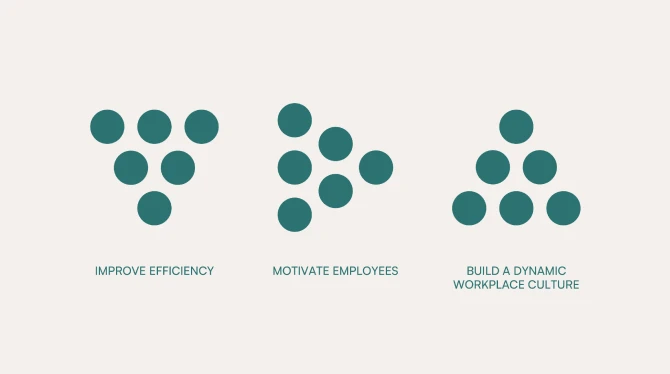📳
Going Viral – Is it Beneficial or is it Too Risky?
LAST UPDATED 21 May, 2024
The allure of going viral captivates companies, management, and marketers alike. The prospect of an overnight sensation, catapulting a brand into the limelight is undeniably tempting.
So, let’s put P.T. Barnum’s1 quote to the test:
“There’s no such thing as bad publicity.”
However, the reality of viral success is far more complex, with both significant advantages and potential disasters. Let’s look into how virality can shape or sometimes distort the perception about a brand.
Can Viral Marketing Move the Needle?
Let’s first observe the benefits a viral marketing campaign can generate.
Whatever the intentions or goals are, there is no way of knowing what each campaign will bring to the table. When venturing into a viral campaign, you are a bystander of the side effects that might occur upon unleashing this pixelated Loch Ness monster into the digital wild.
Exponential Reach and Visibility
One of the most compelling benefits of going viral is the potential in reach and visibility. A single piece of viral content can achieve what traditional marketing might take months or even years to accomplish, in just a few hours.
Take, for example, the ALS Ice Bucket Challenge back in 2014. This viral campaign raised over $115 million for ALS research and significantly increased public awareness of the disease.2

The widespread participation, including celebrities and public figures, showcased the power of virality in amplifying a cause beyond its typical audience.
“Five years after the Ice Bucket Challenge soaked the world, the pace of discovery has increased tremendously, bringing ALS researchers closer than they have ever been to real breakthroughs in diagnosing, treating, and eventually curing this disease.”
President and CEO of The ALS Association.
Cost-Effective Marketing
Viral content often requires minimal investment when comparing to traditional advertising campaigns. In order to have the same reach with digital or tv ads, you could easily save 1000x in ad spend.
The organic nature of virality means that once the content gains traction, it spreads out without any additional costs.
Consider the case of Dollar Shave Club. Their 2012 launch video, featuring a humorous and irreverent take on shaving, went viral, amassing millions of views and generating a wave of new customers.
The video’s success was a major factor in the company’s eventual $1 billion acquisition by Unilever.3 Unilever has sold Dollar Shave Club in October 2023, but that’s another topic, let’s focus on the viral.
Enhanced Brand Recognition and Loyalty
Viral moments can significantly boost brand recognition and loyalty. When the content resonates deeply with an audience, it fosters a sense of connection and loyalty.
For instance, Old Spice’s:
“The Man Your Man Could Smell Like” or “Smell like a man, man.”
campaign revitalized the brand, making it relevant to a younger demographic and driving more loyalty than ever; naturally the increase in sales happened as well. The campaign’s clever and memorable content turned Old Spice into a household name almost overnight. Proving the strategy right, they’ve been hitching this ride ever since with minor tweaks.

Disasters of Going Viral
This is where companies must prepare for the worst!
When conceptualizing the next campaign, marketers most probably didn’t intend to create a storm of negative reactions. Was it that a top manager missed a meeting where the worst possible scenarios were discussed? or was it just negligence?
Be as it may, these outcomes can and do happen, all that is left for a company to do is to work on damage control. This is where we will put P.T. Barnum’s quote to the test.
Loss of Control Over Brand Narrative
While viral content can propel a company, brand, or product into the spotlight, a side effect can also be loss of control over the narrative.
Once content goes viral, it takes on a life of its own, and the original intent can be overshadowed by unintended interpretations or controversies.
A stark example of this is Pepsi’s 2017 commercial featuring Kendall Jenner intended to promote unity.4 Instead, the campaign backfired, and ended up creating an opposite effect.
The ad was widely criticized for trivializing social justice movements. The backlash was swift and severe, forcing Pepsi to pull the ad after one day and issue an apology.5
This is how an initial positive intent can be skewed on the execution level.
A reminder that Pepsi has also made bad branding decisions in the past as well with their several logo redesigns.6 Again, a topic of its own, back to viral.
Risk of Negative PR
Not all PR is good PR, and viral content can sometimes generate a vastness of negative attention that will damage the brand’s reputation. We all know that a bad review can have so much more impact than a positive one.
Even though this was not a campaign, I had to include the example of the infamous United Airlines incident in 2017, where a passenger was forcibly removed from an overbooked flight. The incident went viral and sparked a widespread outrage.
As the New York Times7 put it:
“The disturbing scene captured on cellphone video…”
created a havoc online, where the United Airlines marketing and PR departments had to work around the clock to put out the fire.
The incident led to a significant drop in the airline’s stock price and severely tarnished its public image.

Campaign Copy vs Brand Strategy Alignment
Going viral is often unpredictable and may not always align with a brand’s strategy. A viral release that deviates from the brand’s core values or messaging can create confusion and dilute the brand identity.
For instance, when Burger King’s tweet “Women belong in the kitchen” aimed to promote female chefs, it backfired due to its poorly executed shock value, causing backlash and requiring damage control.

This incident underscores the importance of ensuring that viral content is consistent with the brand’s overall strategy and values.
I would also add here that having a regular common sense check should be must with any post or outreach. In my opinion this kind of approval from a team lead or manager is just pure negligence.
Managing Virality – What to Look For
Given the unpredictable nature of virality, it’s crucial for companies to manage their viral content thoughtfully and thoroughly.
Even if this unstable strategy isn’t the initial idea at the round table, being prepared and developing strategies to navigate potential pitfalls are a recommendation.
Below are a few tactics on how to prepare and react to viral content:
- Prepare for the unexpected – have a crisis management plan in place to address potential negative fallout from viral content. This includes monitoring social media channels, responding swiftly to criticism, and being transparent with the audience;
- Maintain authenticity – viral content should align with the brand’s values and mission, ensuring that the message is genuine and not just a bid for attention;
- Engage with the audience – active engagement with the audience can help steer the narrative. By participating in the conversation and addressing concerns, brands can maintain a degree of control over how the content is perceived and shared;
- Leverage data and insights – analyzing the performance and reception of the viral content can provide valuable insights for future campaigns. Understanding what resonated with the audience can help refine marketing strategies and content creation.
Conclusion
There is no secret formula for achieving virality, it relies on resonating with the target audience’s unique perspective.
Going viral is a double-edged sword that can either catapult a brand to new heights or expose it to unforeseen risks. For viral campaigns to be effective, marketers must understand that success hinges entirely on the audience’s willingness to share the content.
While the benefits of exponential reach, cost-effective marketing, and enhanced brand recognition are significant, the potential for loss of control, negative publicity, and misalignment with brand strategy cannot be ignored.
By preparing for the unexpected, maintaining authenticity, engaging with the audience, and leveraging data insights, brands can navigate the complexities of virality and harness its power effectively.
Good luck going viral!


